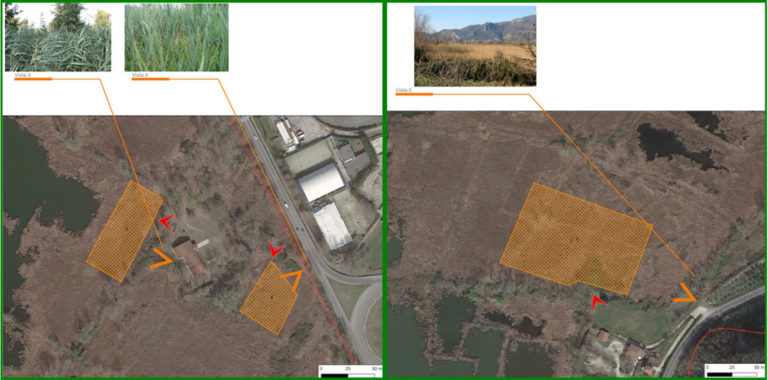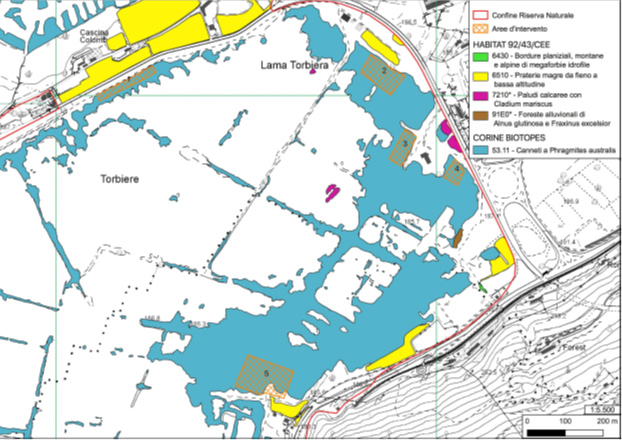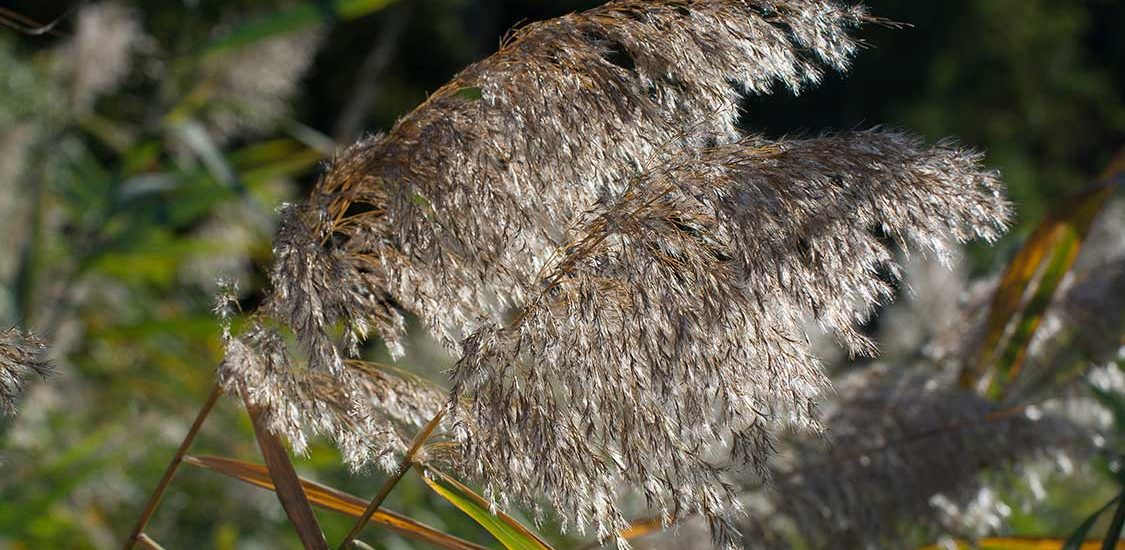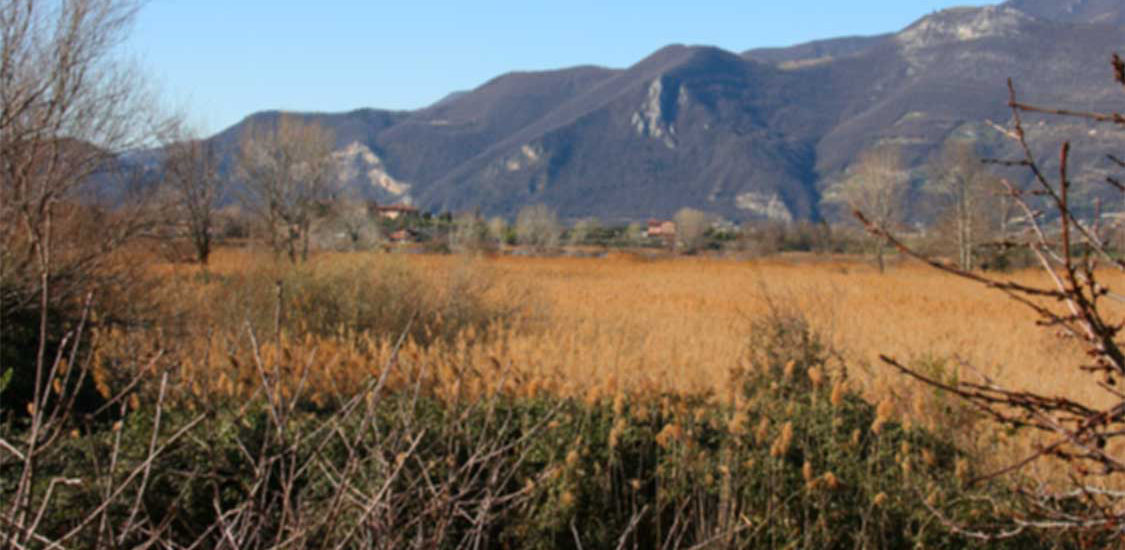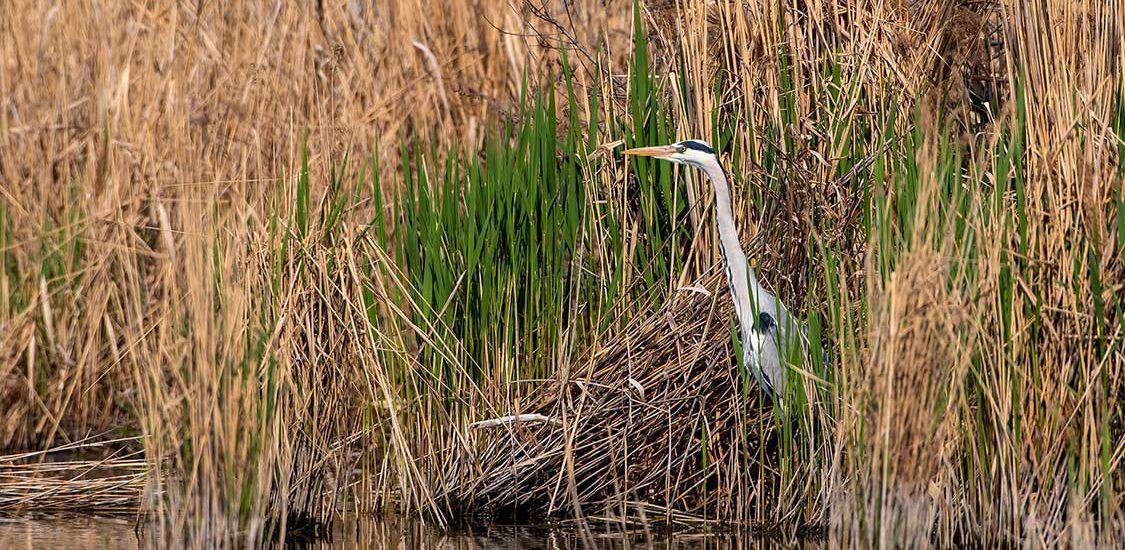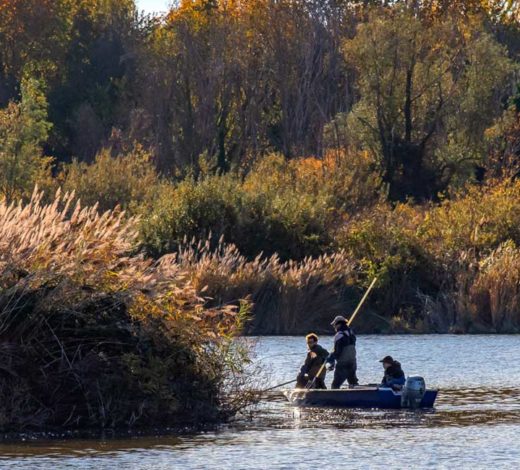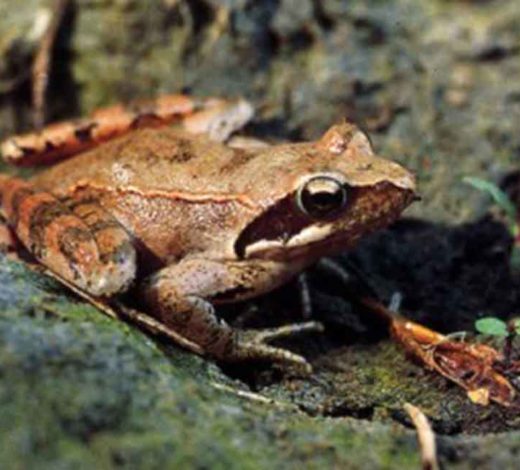RUSHES
This project, which ended in 2021, was financed by the Lombardy Region. It aimed to develop interventions to improve the habitats of bird species by cutting back the rush stands. The goal was to effectively manage the habitats of species of European interest through interventions to improve wintering and reproduction sites and regenerate the wetland areas.
The chosen habitat was the phragmites, which are abundant in the Reserve and cover about 70 hectares, equal to about 20% of the total surface area. To better protect existing plant and animal biodiversity, this environment requires interventions to rejuvenate plant succession while encouraging the permanence of the remaining magnocaricetea.
The areas chosen for this project show a silting process around Phragmites australis, with the result that the vegetation has a dry physiognomy. In addition to depleting plant biodiversity, this process also leads to a degradation in the chosen habitat for nest building and foraging for the following 14 species: Eurasian bittern (Botaurus stellaris), little bittern (Ixobrychus minutus), western marsh harrier (Circus aeruginosus), purple heron (Ardea purpurea), black-crowned night heron (Nycticorax nycticorax), spotted crake (Porzana porzana), little crake (Ponzana parva), Savi’s warbler (Locustella luscinioides), ferruginous duck (Aythya nyroca), common kingfisher (Alcedo atthis), common reed warbler (Acrocephalus scirpaceus), marsh warbler (Acrocephalus palustris), great reed warbler (Acrocephalus arundinaceus), and water rail (Rallus aquaticus).
The intervention occurred in 5 different plain areas at an altitude of about 186 metres above sea level.
The chosen method was to cut away the rush stands and small clumps of grassy/bushy vegetation using an amphibious vehicle equipped with a cutting bar in order to move effectively on the peat surface in the relevant areas. The cuttings were also chipped on site.
